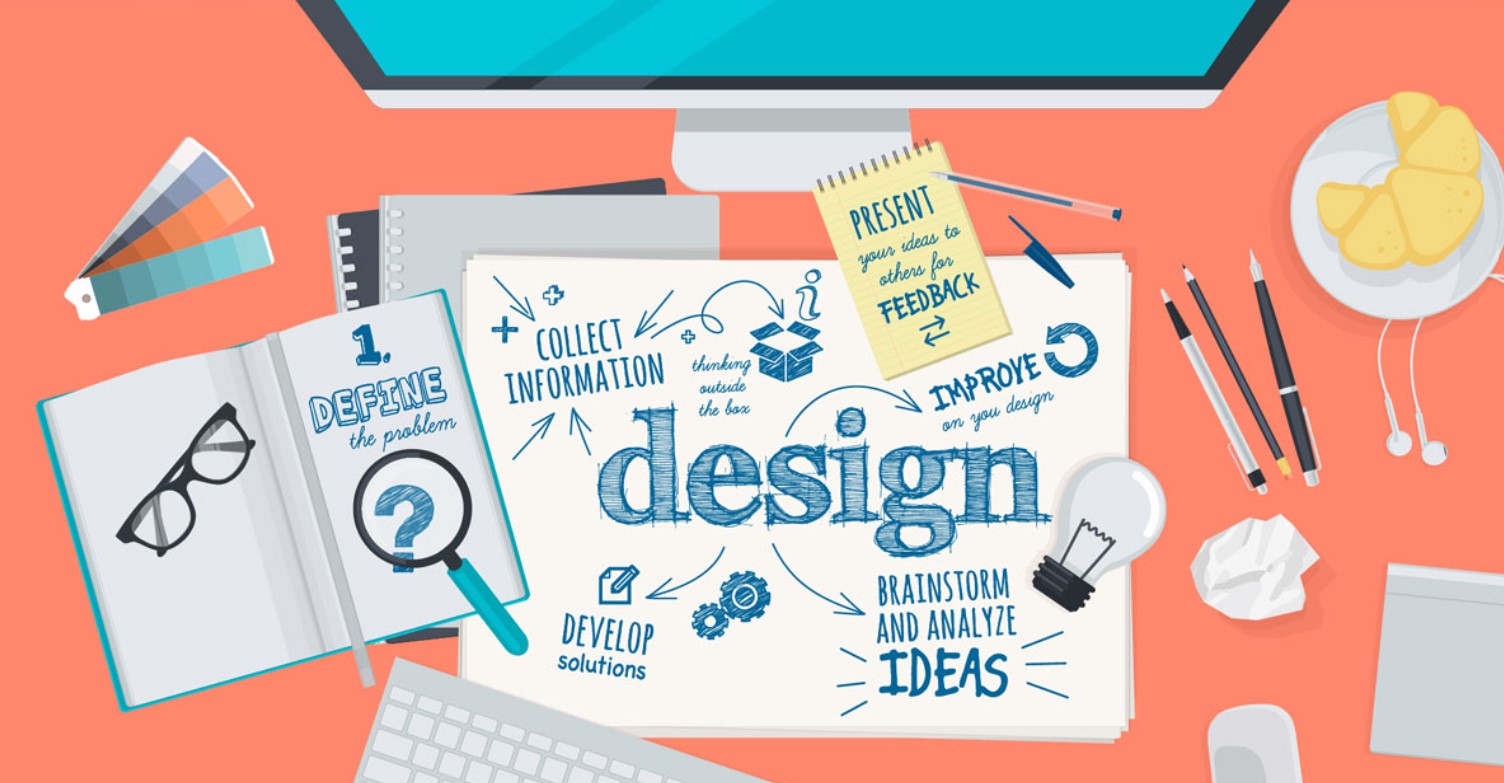Best Selling Products
Design Thinking – The Key to Success in Graphic Design
Nội dung
- 1. What is Design Thinking?
- 2. The Importance of Design Thinking in Graphic Design
- 2.1. Make a Difference
- 2.2. Effective Problem Solving
- 2.3. Encourage Continuous Creativity
- 3. 5-Step Design Thinking Process
- 3.1. Empathize (Empathize – Find customer insights)
- 3.2. Define problem
- 3.3. Ideate
- 3.4. Prototype
- 3.5. Test
Design Thinking is not just a design method but a comprehensive philosophy that helps us look at problems from a new and deeper perspective.

Welcome to SaDesign blog! Today, we will explore an interesting and practical topic: The importance of Design Thinking in graphic design. Whether you are a designer looking for new inspiration or a business looking to elevate your brand, this article will help you better understand the creative approach and why it is important in today's design industry.
1. What is Design Thinking?
Design thinking is a method based on a specific process to find solutions to problems from simple to complex, abstract, and at the same time open the door to creativity. This method has an approach using visual thinking and visualizing the solution. Design thinking helps us review the problem comprehensively, even when the problem is ambiguous and lacking information, thereby pointing out the main source of origin and proposing a radical solution.
2. The Importance of Design Thinking in Graphic Design
2.1. Make a Difference
Design Thinking helps designers focus on empathizing with users from the very beginning. By understanding the needs, desires, and even concerns of customers, you have the opportunity to create products that are not only beautiful but also unique.
.png)
Design solutions developed using this method are often unique and highly creative, helping your brand stand out from the competition in the market. For example, a logo or brand identity created based on a deep understanding of the core values of the business will easily touch the hearts of customers and create a lasting impression.
2.2. Effective Problem Solving
Design Thinking starts with listening and understanding the user’s challenges and expectations. This process ensures that every design idea is built on real data, making the product not only visually appealing but also useful and easy to use.
.png)
By continuously receiving feedback from users during the testing phases, you will quickly identify weaknesses and fix them in time. This helps to minimize risks, save time and costs, and ensure that the final product always achieves optimal quality.
2.3. Encourage Continuous Creativity
One of the great things about Design Thinking is that it creates a space for ideas to be freely tested. Instead of being afraid of making mistakes, each failure becomes a valuable lesson to help improve and develop the product.
Through continuous testing and feedback, designers have the opportunity to continually refine and innovate, resulting in breakthrough ideas. Creativity is not limited by old stereotypes but is always renewed, helping products constantly evolve to better meet customer needs.
3. 5-Step Design Thinking Process
After understanding what Design thinking is and its importance, let's learn the process of implementing this method effectively.
.png)
3.1. Empathize (Empathize – Find customer insights)
Before proceeding with this step, we need to have in hand the research results report, analyzing the target both externally (market, customers) and internally (in the business). We need to clearly identify who the target is and clearly identify the problem that the target is facing (here referring to customers).
Note: the problem that customers are facing, need to be solved and may generate a need, where your business can meet. The denominator needs to be large enough to be effective in terms of quantity and quality. Maybe even customers do not clearly understand the problem they are facing or have not yet discovered that it needs to be solved immediately. Our task is to find it and turn our product into the optimal solution.
.png)
In this step, it is important to put the customer at the center and use the customer's way of thinking to understand their inner voice.
One way to find a problem is to ask the questions: Why?, What?, Who?, Where?, How?. Start with Why to list a series of reasons and approach each reason with the remaining questions to find the root problem that needs to be solved.
3.2. Define problem
After obtaining all the relevant information in the above step, we proceed to assemble, analyze, synthesize and determine the core problem that needs to be solved. Once we have identified the problem, we tend to focus on it without getting sidetracked, reducing the risk of resource dispersion.
You can use a Fish Bone diagram – a variation of a Mind map – to get a visual representation of the information you found in step 1 (empathize).
.png)
3.3. Ideate
This is an important step in the whole process, marking the difference and laying the foundation for creativity in the product.
Based on the steps Empathize and Define problem, we conduct Brainstorming to select the most suitable and feasible ideas.
Principles during Brainstorming: respect teammates, write down any ideas that come to mind that the person who thinks of them feels crazy; criticize but do not attack or insult; need a leader to moderate the discussion.
Effective Brainstorming Sequence:
Introduce the problem that needs a solution and state the principles of brainstorming.
Write down the ideas that come to your mind, no matter how impractical or irrelevant they may seem… In fact, there are some great ideas that are effective that you never thought of. Another reason: writing them down is a way to put them aside and continue to think of new ideas.
Stick ideas on the board, arrange related ideas into a cluster. Then present and debate to find one or more feasible ideas.
.png)
3.4. Prototype
Proceed to implement the ideas found in the previous step into prototypes and models.
The goal of this step is to find effective ideas and solutions and eliminate models that are not feasible when applied to solving that problem.
Businesses also recognize product limitations, existing problems and make product improvements.
3.5. Test
This is the final step of the 5-step Design Thinking process. In practice, this testing step often repeats itself over and over again, from testing, using, evaluating the product, improving, and pivoting.
Even after the product has been launched on the market, it is still necessary to conduct continuous testing to get the best product. Or when a problem has been solved, it is also necessary to re-test, because it is possible that during the implementation process, another challenge arises, or it really does not bring the desired results.
Design Thinking is not only a method or a design support tool but also a philosophy of life, helping us to look at problems from many different perspectives. Applying Design Thinking in graphic design helps create products that are not only beautiful but also truly useful, bringing the best experience to users. At SaDesign, we believe that creativity comes from listening, empathizing and constantly improving. If you are looking for a creative partner to bring your ideas to life, please contact us.












































